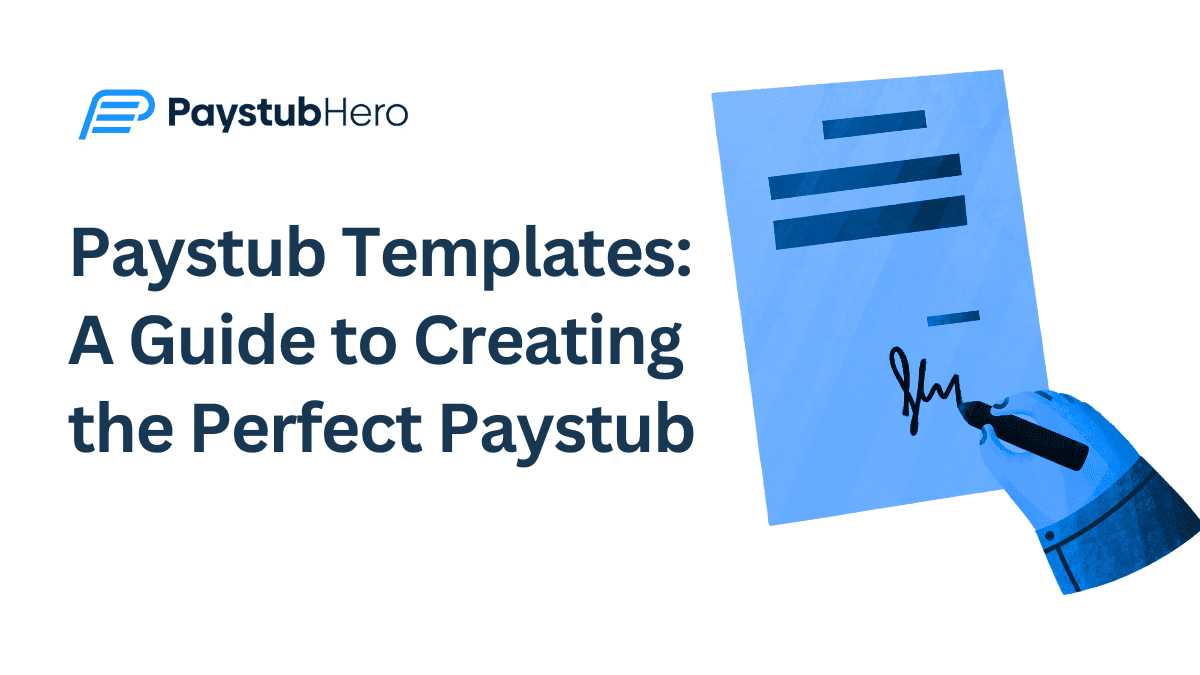Year to date meaning is a critical concept in the realm of finance and accounting. As a hardworking professional, you understand the value of every penny earned. Yet, when it comes to deciphering your paystub, you might find yourself lost in a sea of jargon and numbers.
Among these confusing abbreviations, one that consistently surfaces is ‘YTD’ or ‘Year to Date.’ This is where a lot of individuals find themselves pondering, “What does ‘Year to Date’ even mean?”
In essence, ‘Year to Date‘ meaning refers to the cumulative total of an individual’s earnings from the start of the current calendar year, up to the present date. While this sounds simple enough, there’s more to it than meets the eye.
Understanding the ‘Year to Date’ concept and its relevance can give you a clearer perspective of your income and financial health. It’s a pivotal tool in maintaining financial transparency, facilitating better financial planning, and ensuring accurate income reporting.
In this guide, we’ll delve deeper into the Year to Date meaning, explain its impact on your finances, and illustrate its place within your paystub. We’re committed to empowering you with the knowledge you need to take control of your financial journey.
So, let’s demystify the paystub, starting with the YTD.
Table of Contents
- Introduction
- Breaking Down the Paystub: YTD and Its Significance
- How Many Months in a Year Does YTD Cover? A Closer Look at the Timeline
- What Does YTD Mean for You? Unveiling Its Real-World Impact
- What’s in a Paystub? Decoding the Essentials
- Simple, Streamlined, and Straightforward Paystubs: Achieving Clarity in Earnings
- Take Charge of Your Paystub Today: The First Step to Financial Mastery
Breaking Down the Paystub: YTD and Its Significance
If you’ve ever been mystified by the collection of numbers and abbreviations on your paystub, you’re far from alone. Many find themselves scratching their heads at these seemingly cryptic codes. One abbreviation that particularly stands out is the ‘Year to Date’ or ‘YTD.’ But what is this puzzling term, and why does it matter?
Understanding ‘Year to Date’ earnings is crucial for a host of reasons. In the simplest terms, YTD refers to your total earnings from the beginning of the calendar year until the present moment. This figure represents your net income (after deductions) for all completed pay periods within that time frame.
The presence of YTD on your paystub serves a greater purpose than merely providing a snapshot of your earnings. It’s a tool that reflects your income trajectory, offering valuable insights into your earnings patterns and financial growth.
By keeping a keen eye on this figure, you can monitor your earnings, verify the accuracy of your income, and plan for your future with confidence.
Indeed, the ‘Year to Date’ figure is more than a simple number on your paystub – it’s an essential financial compass, guiding your budgeting decisions and long-term financial planning.
How Many Months in a Year Does YTD Cover? A Closer Look at the Timeline
When we talk about Year to Date or YTD, understanding its coverage is paramount. How many months in a year does it include, and what exactly does ‘to date’ mean? These are common questions that may arise when trying to grasp the concept of YTD.
In essence, YTD covers all the months of the current year, from January 1st up until the present day. This means that it could encompass anything from a single day in January to the very last day of December. It all depends on the day you’re examining your paystub.
This year-long scope allows the YTD figure to provide a comprehensive view of your earnings, painting a picture of your income from the dawn of the year to the present. No matter if you’re in the snowy heart of February or the sunny midst of July, YTD offers a running total of your earnings within the year’s timeline.
The scope of YTD, therefore, serves as an invaluable reference point in understanding your income progression throughout the year.
By providing a clear and up-to-date overview of your earnings, YTD can inform your financial decisions and guide your financial planning with enhanced precision.
What Does YTD Mean for You? Unveiling Its Real-World Impact
So you’ve understood the Year to Date meaning, its presence on your paystub, and its year-long coverage. But what does this all boil down to for you, as an individual or a business owner? What’s the actual significance of YTD in your day-to-day financial management and long-term financial planning?
The value of understanding your YTD cannot be understated. At its core, YTD earnings offer a factual representation of your income from the beginning of the year to the present. This knowledge can inform various financial decisions, from personal purchases to business investments.
Let’s bring this concept to life with an example. Suppose you’re planning a well-deserved vacation, but you need to know how much you’ve earned this year to allocate an appropriate budget.
Your YTD earnings provide this critical information, allowing you to plan your trip without straining your financial wellbeing.
Moreover, having a grasp on YTD can help you verify the accuracy of your income. If you suspect discrepancies in your earnings or need to confirm your income for tax purposes, your YTD earnings stand as an indisputable record.
In essence, understanding YTD isn’t just about interpreting a paystub. It’s about using this knowledge to navigate your financial landscape with clarity and confidence. By leveraging the insights gained from your YTD earnings, you can take control of your financial future and steer it towards growth and stability.
What’s in a Paystub? Decoding the Essentials
While ‘Year to Date’ earnings hold a significant place in your paystub, it’s not the only vital piece of information in this financial document. Understanding the meaning of a paystub and all its components is essential for comprehensive financial management.
So, apart from YTD, what other critical elements are packed into this seemingly small piece of paper or digital document?
First and foremost, you’ll encounter ‘gross pay.’ This is your total earnings before any deductions are applied – the full amount that your employer owes you for your hard work.
Following this, you’ll find ‘net pay,’ also known as your ‘take-home pay.’ This figure is your earnings after all deductions – including taxes and contributions – have been accounted for.
Then comes the ‘taxes’ section, which indicates how much of your income has been withheld for federal, state, and local taxes. This critical figure can help you understand your tax liability and plan accordingly.
Next, you’ll see ‘contributions,’ an umbrella term that covers any deductions made for benefits such as retirement plans, health insurance, and more.
Finally, there’s the ‘pay period,’ a crucial yet often overlooked component. This term refers to the time frame for which you’re being paid, be it weekly, bi-weekly, or monthly.
Altogether, these components provide a comprehensive breakdown of your earnings and deductions.
Understanding the meaning behind each element of your paystub is fundamental to gaining an accurate perspective of your income and expenses. This, in turn, facilitates effective financial planning and ensures you’re on top of your financial health.
Simple, Streamlined, and Straightforward Paystubs: Achieving Clarity in Earnings
Whether you’re an entrepreneur, a freelancer, a small business owner, or an independent contractor, comprehending your paystub and understanding your income should never be a daunting task.
The world of finance is complicated enough without your earnings information adding to the complexity. That’s why we believe that paystubs should be simple, streamlined, and straightforward.
But how does one create a paystub that is both easy to understand and comprehensive? The answer lies in thoughtful design, intuitive structure, and efficient technology. This combination ensures that paystubs serve their primary purpose: to provide clear and accurate information about your earnings, deductions, and net income.
Paystubhero, our online payroll software, is designed with this principle in mind. We understand that time is of the essence for hardworking individuals and small businesses.
That’s why we’ve crafted a user-friendly platform that makes generating a paystub as simple as entering your company or employee info.
Our system does the heavy lifting by handling all calculations accurately. With Paystubhero, you’re free to focus on your core tasks, assured that your paystubs are precise, easy to comprehend, and readily available when you need them.
With Paystubhero, you can bid farewell to complex paystub processes and welcome an era of effortless paystub generation.
We’re not just about making paystubs; we’re about simplifying financial information so you can understand your earnings at a glance and make informed decisions that drive your financial success.
Take Charge of Your Paystub Today: The First Step to Financial Mastery
Armed with a comprehensive understanding of ‘Year to Date’ and its place in your paystub, you’re now ready to take the reins of your financial journey. The significance of YTD and its influence on your financial comprehension and management should not remain a mystery.
With the insights we’ve shared, understanding your paystub becomes a streamlined and enlightening process.
But what’s the next step? How can you take the knowledge you’ve gained today and apply it to your everyday financial management? This is where you take action and take charge of your paystubs.
As an entrepreneur, freelancer, small business owner, or independent contractor, staying on top of your earnings and deductions is critical. Accurate paystubs serve as a testament to your financial standing, enabling you to make informed financial decisions, plan for your future, and maintain financial transparency.
Trusting Paystubhero with your paystub generation means you’re choosing a simplified, efficient, and accurate process. We’re dedicated to providing robust paystub solutions for individuals and businesses who need a straightforward yet comprehensive approach to their earnings.
So why wait? Get ready to demystify your financial documents, keep an accurate track of your earnings, and master your financial future. Trust Paystubhero – the hero in paystub generation for small businesses, freelancers, and independent contractors.
It’s time to generate your documents quickly and efficiently with Paystubhero. Remember, taking charge of your finances is as easy as 1-2-3.
Frequent Asked Questions
- What is year to date calculation?
- The year to date (YTD) calculation is a cumulative total of an individual’s earnings from the start of the current calendar year up to the present date.
- What is the difference between 1 year and YTD?
- While “1 year” refers to a fixed, complete calendar year, YTD refers to the period from the start of the current year up to the present date, which can be less than a full year.
- Why does year to date mean?
- ‘Year to Date’ (YTD) represents the total earnings an individual has made from the start of the current year up to now. It provides an ongoing record of income within a specific year.
- Is year to date the same as annual income?
- Not necessarily. While YTD is a running total of your earnings within the current year, annual income refers to the total income earned over an entire calendar year. By year-end, YTD could equal your annual income, but not always.
- What does year to date mean in payroll?
- In payroll, Year to Date (YTD) refers to the total gross income an employee has earned from the beginning of the current year up to the present date. It helps track income and deductions for financial and tax purposes.









